Figures & data
Figure 1. Schematic of the arrangement of the induction systems and a titanium alloy coupon in a Petri dish (top) and heating curves for target temperatures, Tx (bottom). µC = micro-controller for temperature control and communication (data logging) with the laptop.
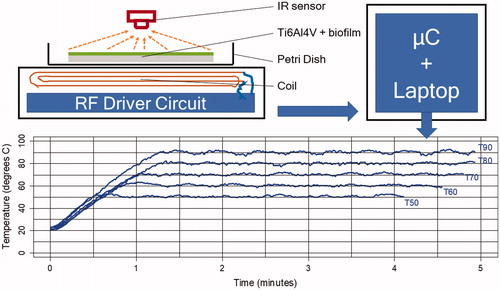
Figure 2. Graph showing the relationship between temperature exposure and log colony forming units (CFU) per cm2 for Staphylococcus aureus biofilms. The bacteria were exposed to the target temperature for 3.5 min. Data are presented as means and corresponding 95% confidence intervals. CHX: chlorhexidine; C: degrees Celsius.
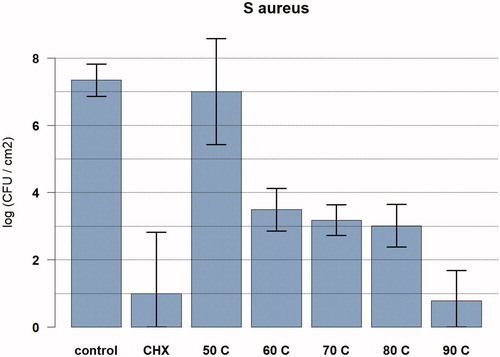
Figure 3. Graph showing the relationship between temperature exposure and log colony forming units (CFU) per cm2 for Staphylococcus aureus biofilms with and without antibiotics after thermal exposure. The bacteria were exposed to the target temperature for 3.5 min. Data are presented as means and corresponding 95% confidence intervals. AB: vancomycin 10mg/l, and rifampicin 1mg/l for 24 h after thermal shock from induction heater; C: degrees Celsius; *full eradication.
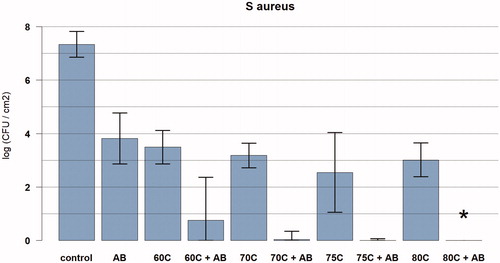
Figure 4. Graph showing the relationship between temperature exposure and log colony forming units (CFU) per cm2 for Staphylococcus aureus biofilms with cocktails of antibiotics with and without NAC. The bacteria were exposed to the target temperature for 3.5 min. Data are presented as means and corresponding 95% confidence intervals. AB: vancomycin 10mg/l, and rifampicin 1mg/l for 24 h after thermal shock from induction heater; C: degrees Celsius; NAC: NAC 0.5 mg/l; *full eradication.
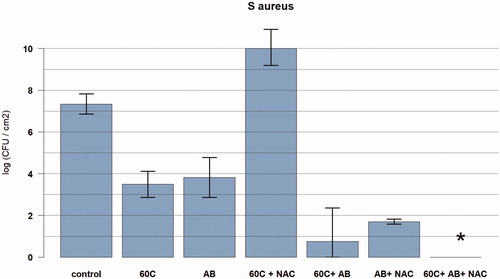
Figure 5. Graph showing the relation between temperature exposure and log colony forming units (CFU) per cm2 for Staphylococcus aureus biofilms for different concentrations of vancomycin (10 mg/l and 1 mg/l), rifampicin (1 mg/l), and NAC (0.5 mg/l). The bacteria were exposed to the target temperature for 3.5 min. Data are presented as means and corresponding 95% confidence intervals. AB: vancomycin 10 mg/l, and rifampicin 1 mg/l OR vancomycin 1 mg/l and rifampicin 1 mg/l for 24 h after thermal shock from induction heater; C: degrees Celsius; NAC: NAC 0.5 mg/l; *full eradication.
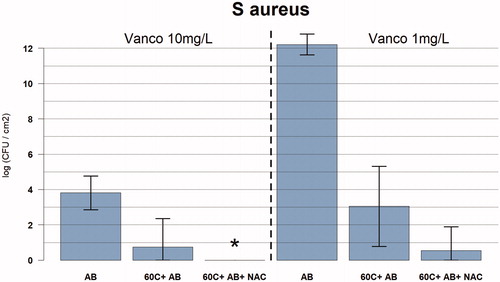
Data availability statement
The data set for this work will be made available on EASY by Data Archiving and Networked Services (DANS): https://easy.dans.knaw.nl/ui/home.
